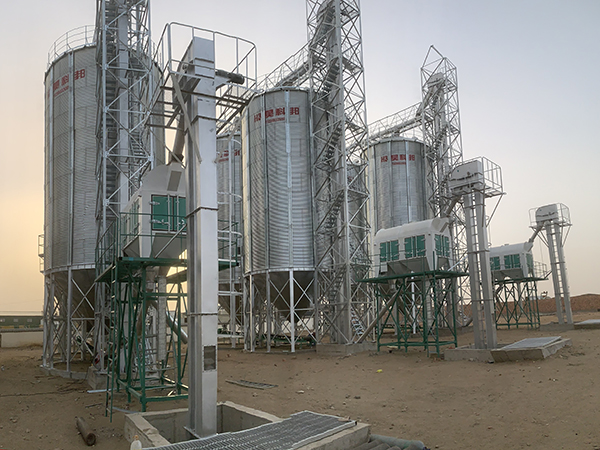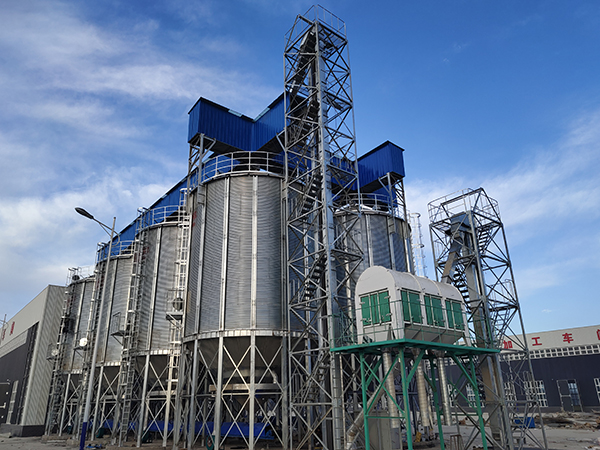Steel silo process, installation process in Uganda
Steel silo can be equipped with one of four base types: all-steel structures, concrete bases, concrete column conical hoppers, and concrete flat bases. The choice of base type can vary depending on the customer’s requirements, and consequently, the cost will differ as well.
- Main Functions of Flour Storage Silo in Uganda
- Galvanized soybean silo sale in Egypt
- Main advantages of flour storage silo in Uganda
- Maintenance Methods for Peanut Storage Silo in Uganda
- Installation Process of Peanut Storage Silo in Uganda
- Small silo price in Ethiopia
- Structural Composition of Peanut Storage Silo in Uganda
- Large silo installation process in Benin
- Main Advantages of Peanut Storage Silo in Uganda
- Main functions of peanut storage silo in Uganda
- Spiral silo process in Angola
- Paddy silo franchise in Ghana
Steel Silo Base Options and Their Impact on Cost
Understanding the Different Base Types for Steel Silo
Steel silo can be equipped with one of four base types: all-steel structures, concrete bases, concrete column conical hoppers, and concrete flat bases. The choice of base type can vary depending on the customer’s requirements, and consequently, the cost will differ as well. From a process and usage perspective, conical-bottom silos are preferred for their advantages such as no grain residue and the elimination of the need for cleaning equipment. However, from an economic standpoint, conical-bottom silo have certain limitations and are typically suitable for silos with a diameter of less than 10 meters and a capacity not exceeding 1500 tons.


Economic Considerations for Larger Diameter Silo
For larger diameter steel silos, the natural flow angle of the material must be considered. The smaller the natural flow angle of the material, the greater the height of the cone. The natural flow angle for grain is generally around 40 degrees. As a result, when the diameter of a steel silo is large, the upper beam of the supporting structure will increase accordingly. This leads to an increase in the cost of the foundation.
For large diameter steel silo, a flat-bottom silo may be a more suitable choice as it can significantly reduce the engineering cost while meeting the performance requirements. The design of a flat-bottom silo allows for greater flexibility to adapt to various storage needs and foundation conditions. However, it may necessitate additional cleaning equipment to ensure smooth material discharge.
All-Steel Conical Bases for Smaller Capacities
All-steel conical bases are suitable for silos with a capacity of less than 1000 tons and are more expensive compared to other options. The advantage is that the material can be completely discharged cleanly. Compared to concrete flat-bottom silos, they are more economical in the long run. However, they may require manual cleaning in the future.
Haokang Steel Silo’s Comprehensive Services
Haokang Steel Silo primarily focuses on offering comprehensive solutions for diverse storage engineering projects. This includes process design involving lifting, conveying, magnetic separation, dust removal, ventilation, temperature measurement, drying, fumigation, and other supporting systems. They also specialize in civil construction services. They also offer electrical control, complete sets of engineering design, manufacturing, installation, commissioning, and personnel training.
Prefabricated Assembled Steel Silo
An assembled steel silo, also known as a prefabricated steel silo, is created by punching corrugated steel sheets. These sheets are mechanically rolled and pressed into a wavy pattern.These sheets are then connected with high-strength bolts using an electric torque wrench. They are characterized by high standardization, factory prefabrication, simple assembly, strong mobility, and a long lifespan. Additionally, they offer a wide range of storage capacities and are relatively low in cost.








